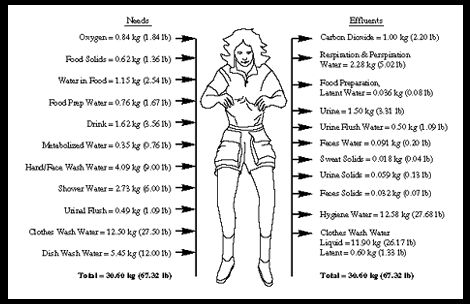N
neilsox
Guest
One year is likely as this has been done in nuclear submarines. Ten years, perhaps, if we have start with 100 tons, each, of oxygen and water, so we can replace contaminated air and water, when the recycle equipment is no longer able to remove some of the trace contaminants. Ten tons of food will feed 2 people, one kilogram per day for 5000 days, more if we can recycle the fiber from their poop. I'm thinking mostly freeze dried food. Fresh frozen at -39 f = -39 c is likely practical for 50 years, but we are talking, perhaps 1000 tons with the deep freeze equipment, and the energy source, assuming we we will be too far from the sun to use photovoltaic panels. We may need 100 tons of replacement parts to keep vital systems working for 50 years, lots more to keep non-essential systems operating. What else do we need and are my estimates reasonable? Neil



